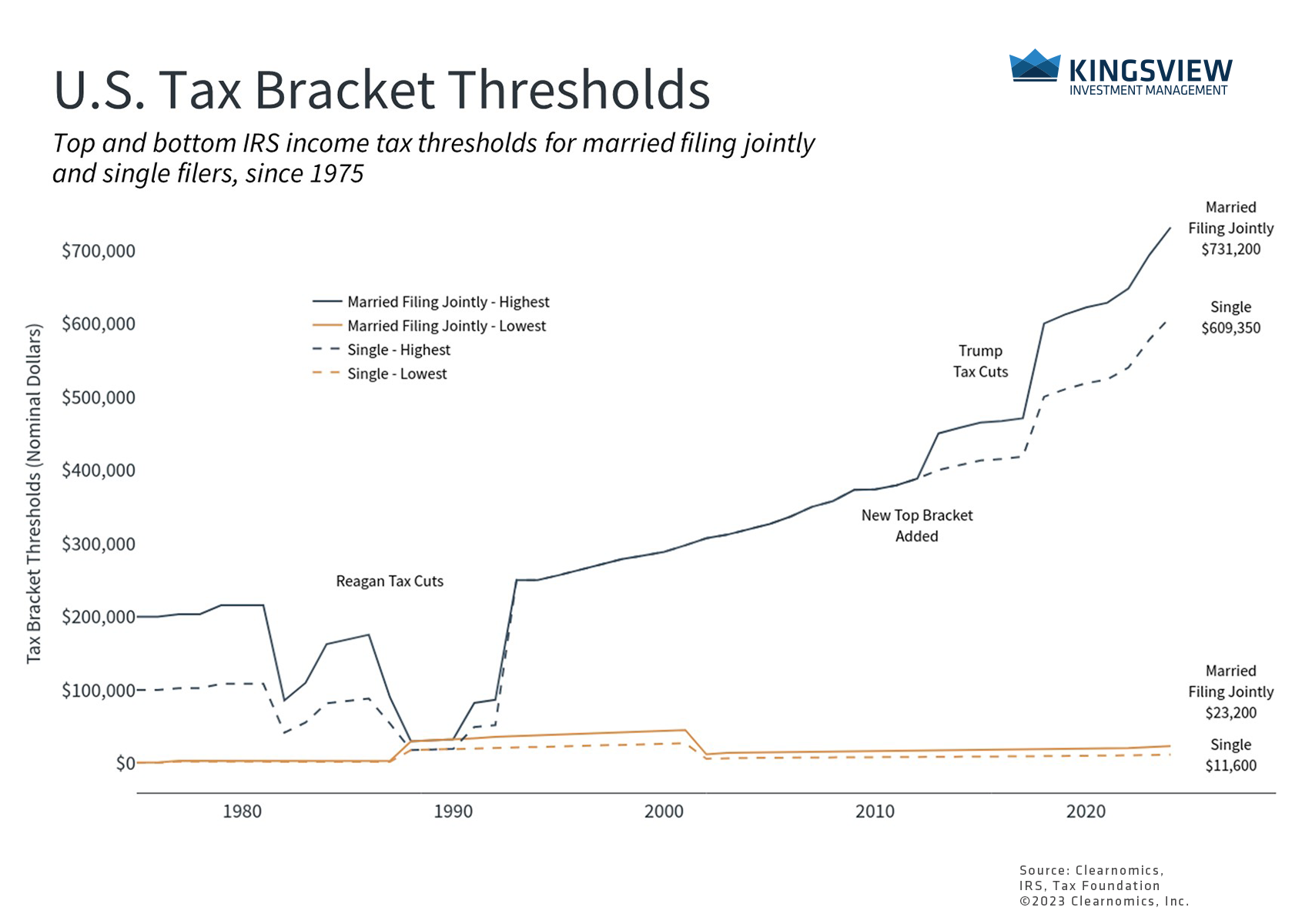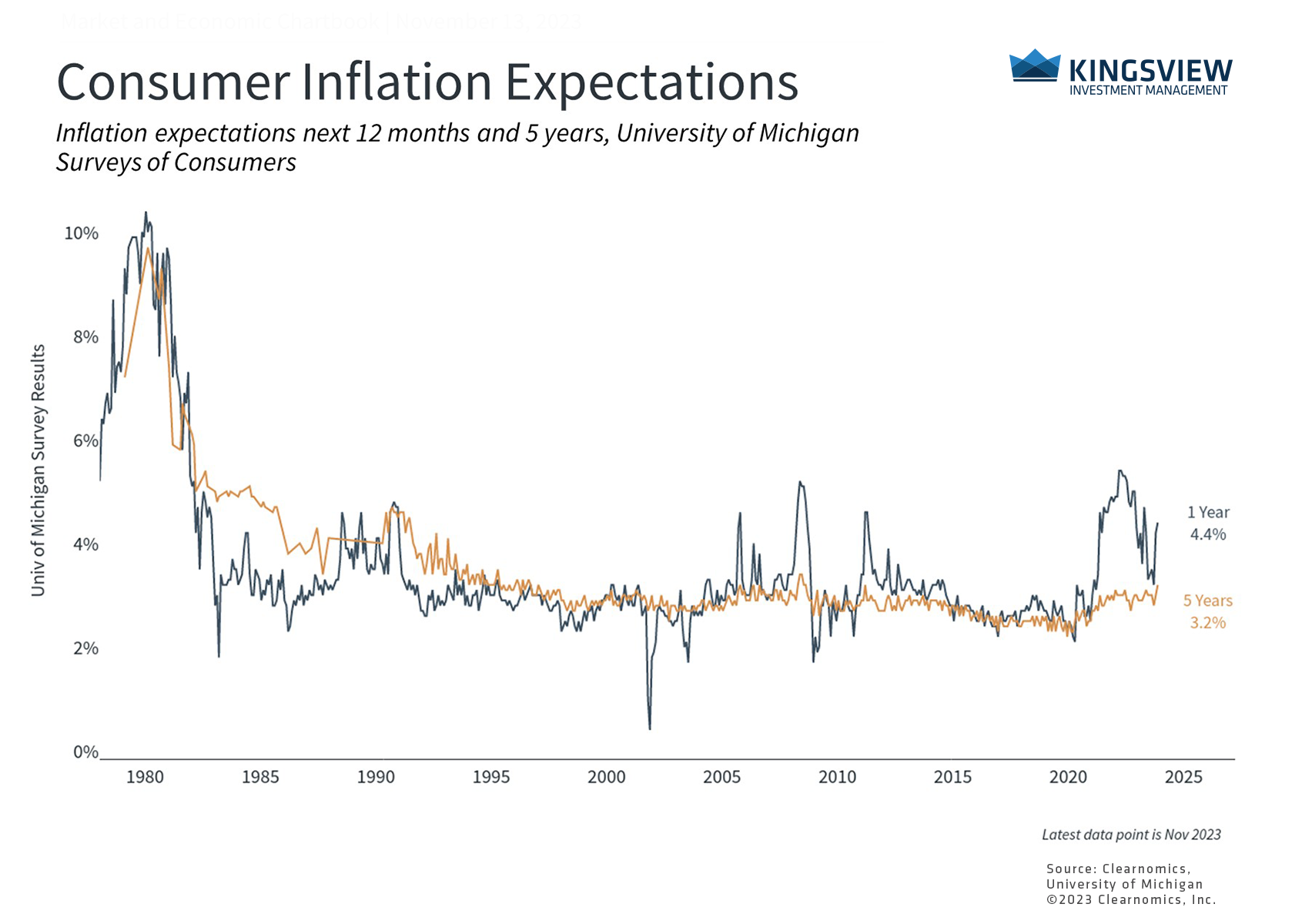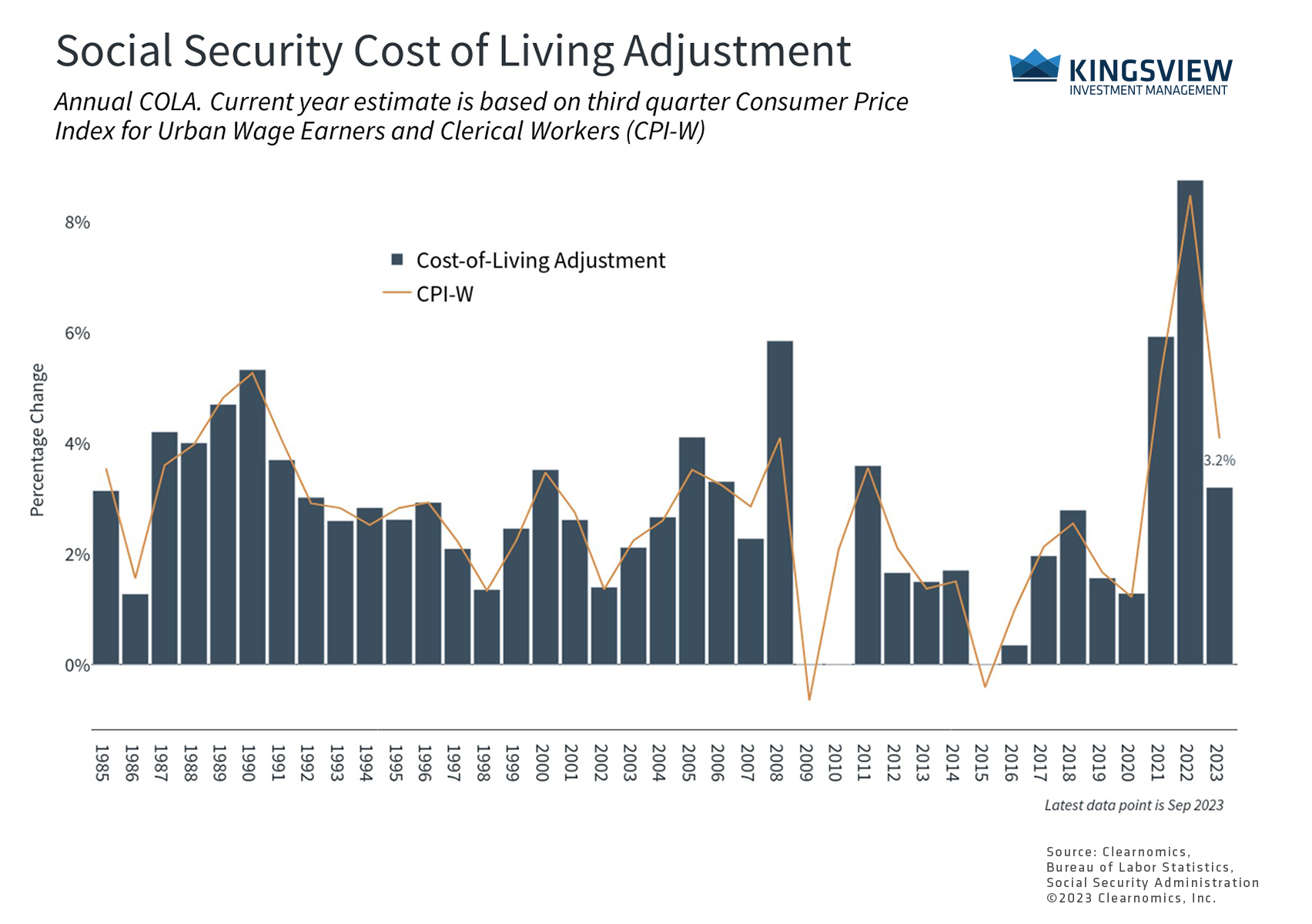Portfolio Manager Insights | How Inflation Impacts Taxes and Retirement Benefits — 11.15.23
Click here to download this commentary in PDF format.
While the holiday season is ideally a time for family and friends, it is also the best time to review tax strategies for the coming year. Tax planning includes topics such as tax-loss harvesting, choices of investment vehicles, optimizing the order of withdrawals, and many others. Given the complexity of these tax considerations, it’s important to work with a trusted financial advisor or planner to best understand each approach and its implications. It’s also important to understand the economic climate’s effect on taxes, especially the impact of inflation. What do investors need to know as they plan for the coming year?
While inflation is effectively a hidden tax on consumers in that it reduces the purchasing power of cash, it also has an impact on actual tax bills. This is because incomes tend to rise in inflationary environments due to higher wages. Left unchecked, this can lead to “bracket creep” in which growing nominal incomes push taxpayers into higher tax brackets. To prevent these distortions, the IRS adjusts federal tax brackets each year based on inflation rates.
Tax bracket thresholds are adjusted for inflation

In 2024, this adjustment amounts to a 5.4% increase in tax bracket thresholds and standard deductions. The top tax bracket will start at $731,200 for those with a status of “Married Filing Jointly,” up from $693,750 in 2023, while the lowest tax bracket has a ceiling of $23,200 instead of $22,000. The same increases apply to other filing statuses but it’s important to note that not all parts of the tax code receive these adjustments. Additionally, these adjustments only directly impact federal taxes, not state and local ones. In fact, the federal deductions for state and local taxes are not adjusted for inflation. Again, due to these nuances, it’s important to consult a professional when making tax decisions.
On a technical note, the IRS uses what is known as the “Chained CPI For All Urban Consumers” (C-CPI-U) for these adjustments. This differs from the typically quoted CPI numbers by better accounting for changes in consumer spending patterns, making it arguably more accurate over time. This is referred to as the “substitution effect” since consumers can change their behavior as the prices of goods rise and fall. However, chained CPI-U has also historically been lower than traditional CPI measures, potentially impacting the benefits taxpayers receive.
Consumers expect higher inflation

While inflation has improved significantly over the past year, recent economic data also suggest that consumers expect inflation to remain higher for longer. The latest data from the Surveys of Consumers by the University of Michigan show that consumers expect inflation to average 4.4% over the next year, an increase over the last two months from 3.2%. Consumers also expect inflation to average 3.2% over the next five years, a jump from the 2.8% in September and well above the 2% target the Fed hopes to achieve by 2026. While these short-term fluctuations may be the result of factors such as swinging energy prices and interest rates which have already reversed somewhat, they also reflect the uncertainty all consumers face in this economic environment.
Ironically, this tax and inflation discussion comes at a time when the government is facing difficulty agreeing on a budget in the House of Representatives. The government should have originally agreed to a new budget this past September but instead enacted a short-term funding plan that kicked the can down the road until November 17. Unfortunately, that deadline is now fast approaching.
At the time of this writing, the House is considering a two-step continuing resolution to keep some important government services funded through January 19 (Veterans Affairs, the Department of Energy, the Department of Transportation, etc.) and others through February 2 (Department of Defense, the State Department, etc.). If this fails to pass, the House may turn to a bill that will keep spending flat for one year. Whichever scenario plays out, it’s likely that this budget battle will bleed into 2024 just as the presidential election heats up, and as we approach the next debt ceiling increase in early 2025.
This is relevant to investors and taxpayers because these political challenges stem from underlying fiscal issues, namely the size of the federal deficit and debt. These problems have resulted in both political gridlock in deciding on a budget as well as during debt-ceiling increases. Unfortunately, these are long-term problems that are only likely to worsen. Many economists and investors worry that unless there are dramatic cuts to spending, the most likely direction of taxes is up. This is compounded by the fact that tax rates are quite low by historical standards with a top bracket of 37% – well below the historical highs of 90% and above throughout the middle of the 20th century.
The Social Security cost-of-living adjustment is 3.2% for 2024

Just like the tax bracket thresholds, there are also inflation adjustments to Social Security benefits. These Cost-of-Living Adjustments (COLA) help Social Security recipients by raising benefits as prices of goods and services rise. The adjustment for 2024 will be 3.2% based on an index known as the CPI-W which measures households that depend on “clerical or wage occupations.” This represents a deceleration from the 2023 increase of 8.7%, the largest since 1981, due to slowing inflation rates.
Thus, inflation has many impacts on personal finances, including taxes and retirement benefits. While inflation adjustments may help to prevent additional tax burdens this year, the future path of tax policy remains uncertain. Investors should focus on what they can control when it comes to their tax planning and strategies, rather than worry about what Congress and markets may do next. As always, investors should seek professional advice when making financial and tax decisions.
The bottom line? Investors should be aware of tax and benefits changes as they review their tax strategies for the coming year, ideally with the help of a professional.
Historical references do not assume that any prior market behavior will be duplicated. Past performance does not indicate future results. This material has been prepared by Kingsview Wealth Management, LLC. It is not, and should not, be regarded as investment advice or as a recommendation regarding any particular security or course of action. Opinions expressed herein are current opinions as of the date appearing in this material only. All investments entail risks. There is no guarantee that investment strategies will achieve the desired results under all market conditions and each investor should evaluate their ability to invest for the long term. Investment advisory services offered through Kingsview Wealth Management, LLC (“KWM”), an SEC Registered Investment Adviser. (2023)
